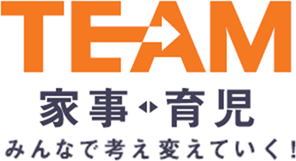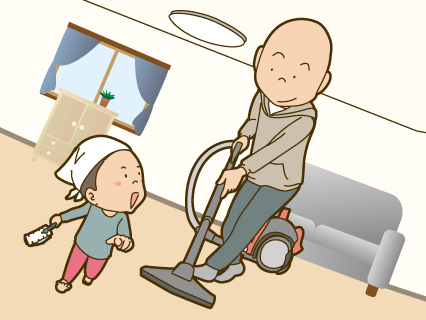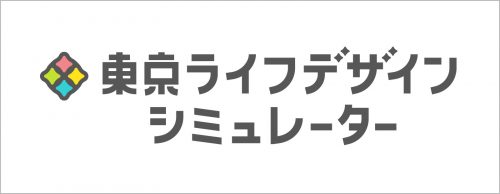Table of Contents
- Parenting cartoon, “Why Dad is So Good at Folding Laundry.”
- Dad’s housework skills are improved, and mom is satisfied! Leave the cleaning and laundry to Dad!
Parenting cartoon, “Why Dad is So Good at Folding Laundry.”
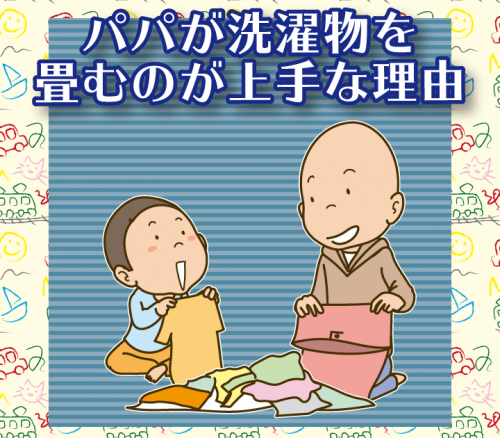
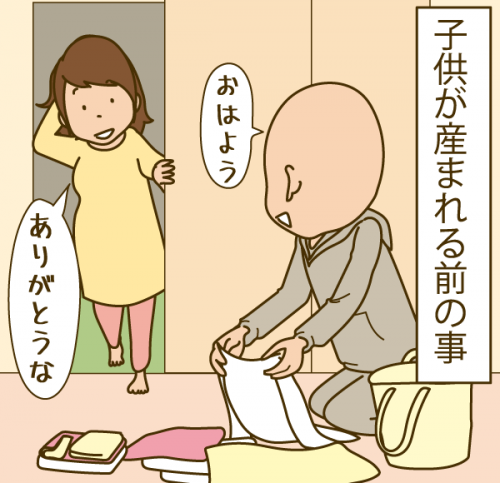
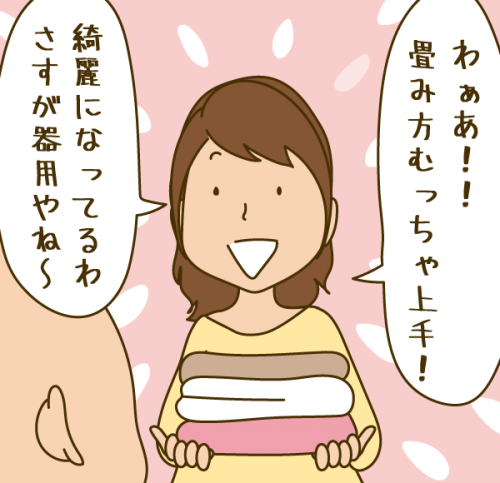
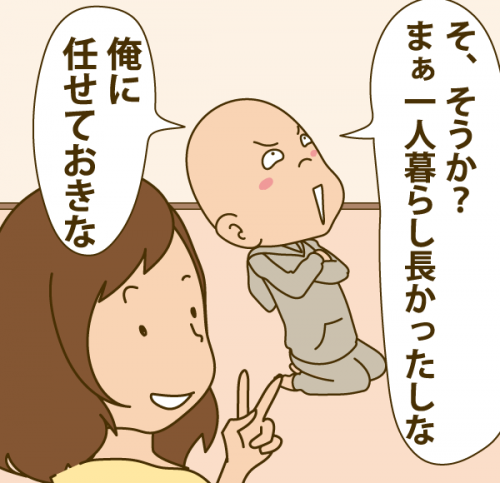
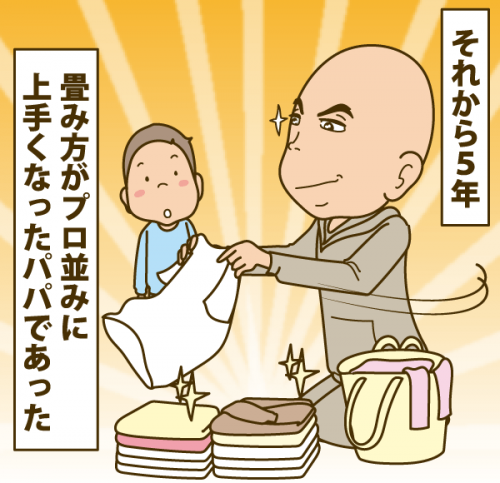

Profile
Eiichi
After working for a design company in Tokyo, he became a freelance illustrator. He is a hard-working father who creates animation, manga, and illustrations, including winning the Yubari International Fantastic Film Festival’s International Short Film Showcase Division Excellence in Animation Award.
Dad’s housework skills are improved, and mom is satisfied! Leave the cleaning and laundry to Dad.
Last year, the Tokyo Metropolitan Government conducted a “Survey on Men’s Participation in Housework and Childcare,” which revealed that housework is still shared disproportionately by wives. In the “Dad’s Style” series, we pointed to the improvement of husbands’ housework skills as a key measure to improve the situation (see Part 13, “Has Male Participation in Housework and Child Rearing Progressed? (Click here for the article “Analysis of Tokyo Metropolitan Government Survey Results! is here ). In this issue, we ask an expert to share tips on how to improve cleaning and laundry, two areas in which wives have expressed a strong desire to see their share of the household workload.
Cleaning Tips
Clean your house with “Tsudete cleaning” that you can do after you get home!
I’m so busy with work, I don’t have time to go home and clean. Family tidying consultant sea offers some advice for dads who think so. Here are some easy cleaning methods that can be done in a short period of time.
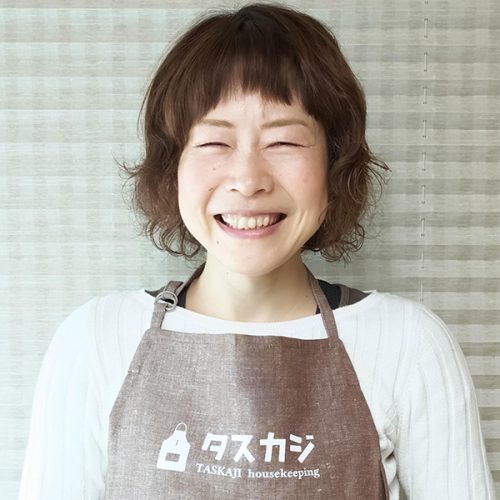
Recommendation of 10 minutes a day of “Tsudzuki” cleaning
There are two types of cleaning. There are two types of cleaning: “cleaning after it gets dirty” and “preventive cleaning to prevent it from getting dirty. Many people may try to clean after it gets dirty, but that takes a lot of time and effort. Preventive cleaning can be done in 10 minutes “on the side” of something. Preventive cleaning is much easier. It should also be less burdensome for busy fathers.
Handy mop, microfiber dishcloth, and Japanese towel are useful tools for “Tsudete Sweeping. A handy mop can wipe away accumulated dust without making it fly around. The microfiber dishcloth is useful for wiping up the kitchen, as its microfiber fibers collect dirt and absorb moisture. Japanese tenugui cloths are made of cotton, so they do not leave lint on the wiped area, which gives them an advantage in dry wiping.
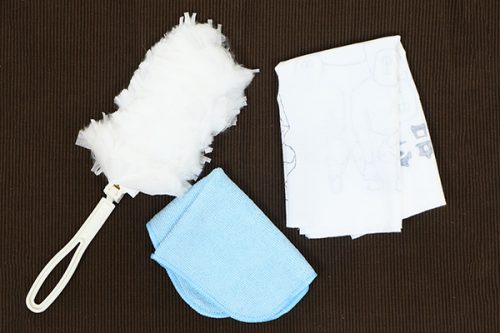 From left to right: Handy mop, microfiber dishcloth, and Japanese tenugui towel.
From left to right: Handy mop, microfiber dishcloth, and Japanese tenugui towel.
All of these tools can be easily purchased at 100-yen stores, but the key to using them effectively is to keep them ready for use at all times. Since they can be used at any time, you can “clean while you clean” in a short time. Decide where you want to put the three tools and make it a habit to return them there after use. I call this a “cleaning station.
When you get home, pick up one of these three tools and do a quick sweep around the house. If you use a different tool each day, you will have three patterns of preventive cleaning in three days.
Handy Mop Day
Clean areas where dust tends to accumulate, such as on shelves, in front of windows, and on TV stands.
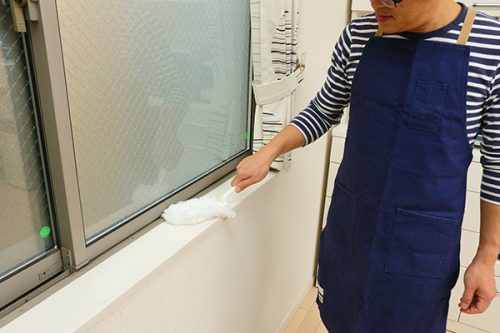
Microfiber Day
Clean the range top, kitchen cooking area, and sink.
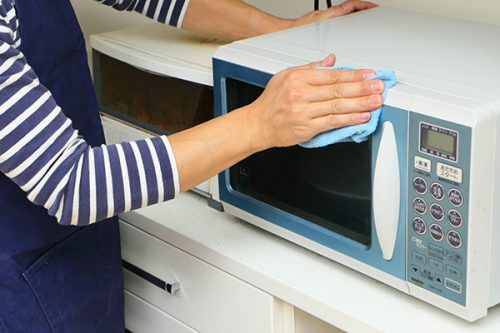
Japan Tenugui Day
Wiping down glossy surfaces such as mirrors and cupboard glass will make many places shine!
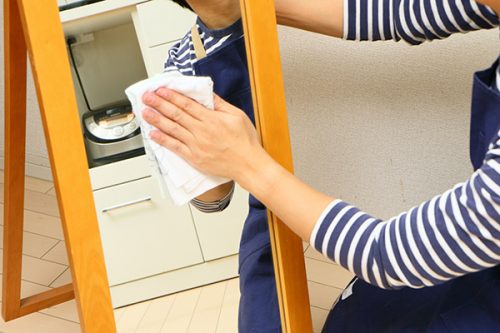
Eliminate misconceptions and increase efficiency
Habitual cleaning practices and misconceptions can actually lead to inefficiencies. Here are some common cases.
Vacuuming is not as effective when done in a hurry.
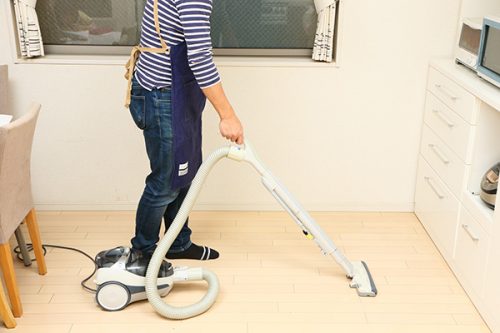
When vacuuming when time is short, we tend to move the head speedily. However, this does not allow the vacuum cleaner head to fully absorb the debris. It is better to move the vacuum cleaner head as slowly as possible to effectively suck up debris.
Ventilation during cleaning does not remove dust.
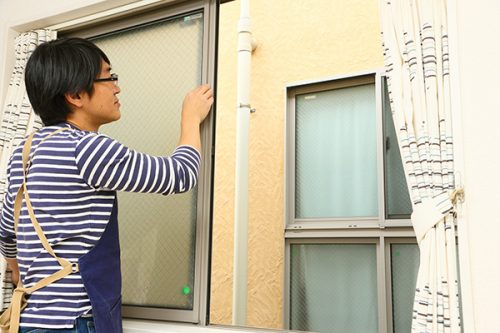
It is said that ventilation is important when cleaning, but if you open a window in an area where dust has accumulated, it will be blown away by the incoming wind, making it impossible to wipe away the dust. It is better to ventilate after wiping off all the accumulated dust. Or, if you open some windows to create a breezeway, the dust that has flown in will be blown out.
The table doesn’t end when you wipe the top.
In the dining room, you may often end up cleaning up spills on the table or floor. However, small children may wipe their dirty hands on the back of the table. After wiping the table top, check the underside of the table and wipe up any stains.
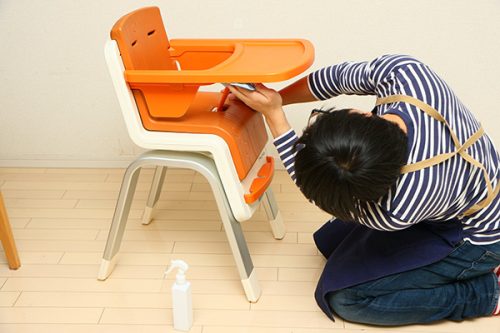
You may frequently wipe under the legs of chairs because of the dust and hair that collects on the floor, but in fact, there may be spilled juice, milk, etc. on the legs. Check the entire leg and remember to wipe it down.
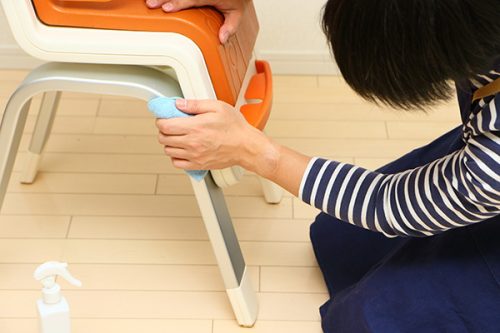
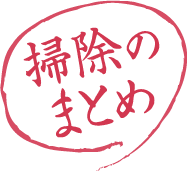
Prioritize cleaning as a couple.
There are many places in the house that need to be cleaned, and there is no end to what can be done to make it “clean. Therefore, it is important for couples to discuss and decide, “How much should we do at home?” It is therefore important to discuss this with the couple and decide “how far we will go in our home. List the areas that are bothering each other and prioritize the cleaning tasks.
Laundry Tips
Remove dirt with a single effort before putting it in the washing machine.
Laundry is easy because the washing machine does it for you! Many fathers may think this way. In fact, there is a lot of work to be done before and after. We asked Tomoki Matsunobu, laundry sommelier at Freddielec Wash Salon, a laundromat operator, to share some tips.
Let’s start with a few tips before putting it in the washing machine.
Pre-Wash Tips Part 1
All laundry that is turned inside out does not have to be put back in the front.
It is often said that laundry that has been turned inside out should be put back in the front before washing. However, this is when the front side of the garment is soiled. If the front side of the garment is not particularly dirty and you are concerned about sweat on the back side that has been in contact with the skin, we recommend that you wash the garment inside out. Laundry with prints on the outside may also be better washed with the garment still inside out.
Pre-wash tips Part 2
Oxygen bleach for blood stains
Blood stains that form when a child is injured or has a bloody nose are one of the most difficult stains to remove. Blood stains are composed of protein, so baking soda or oxygen bleach will remove them well. Apply the bleach directly to the clothes before putting them in the washing machine. (If using chlorine bleach, be careful not to use it on patterned or colored clothing.)
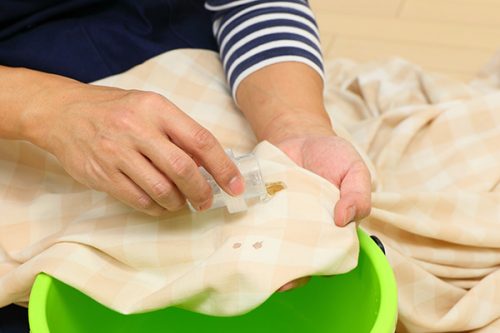
After that, soaking in lukewarm water of about 30°C to 35°C is more effective. This method is effective not only for blood, but also for breast milk stains, which are composed of the same protein.
In addition, mud stains on socks and pants should be scrubbed with a brush while they are dry to scrape off as much of the mud as possible, because if they are wet, the mud will get entangled in the fabric and will be difficult to remove.
Pre-wash tips Part 3
Dishwashing detergent for shirt collars and sleeves
Dishwashing detergent that removes grease can also be used for laundry. Shirt collars and sleeves are basically heavily soiled with sebum, a skin oil, so applying dishwashing detergent directly to them before putting them in the washing machine will make them easier to clean.
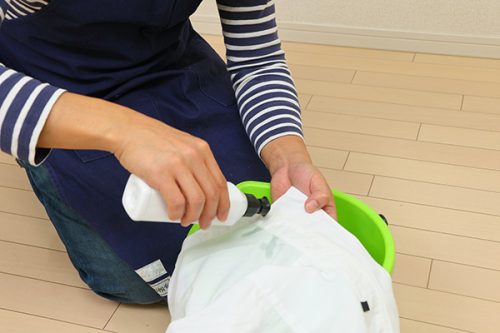
Now, here are some tips for when the laundry is done.
Tips after laundry Part 1
Make sure that a wide side of the laundry is exposed to the wind.
When drying laundry, the key is to make sure that the air blows over as wide a surface as possible. When drying hard-to-dry items such as sweatshirts, parkas, and denim, fold the hangers so that the laundry becomes three-dimensional, which speeds up drying time.
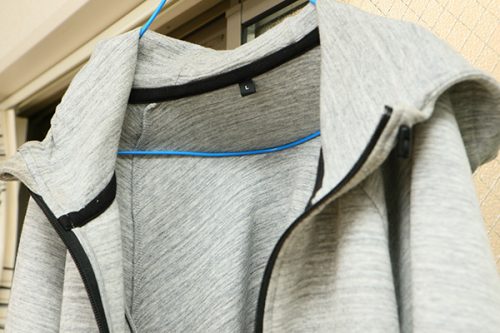
Tips after washing Part 2
Fold into the same size using a paper pattern
Folding laundry into the same size is a difficult task if you are not used to it. This is where we would like to take advantage of cardboard for crafts. If you fold laundry by wrapping it in the same size of cardboard, the folded laundry will be the same size. This makes it easier for children to help.
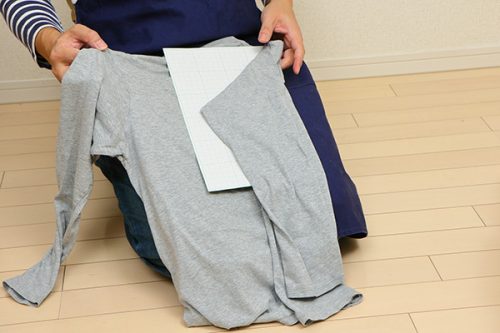
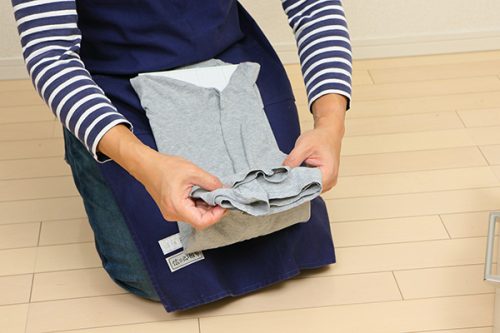

Tips after laundering Part 3
Ironing from a small area
The basic rule of ironing is to iron from the smallest area. For shirts, first the collar. Next, iron the cuffs, then the entire sleeve, then the front, and finally the back. The trick to avoid wrinkles is to iron while firmly pulling and stretching with the hand that is not holding the iron.
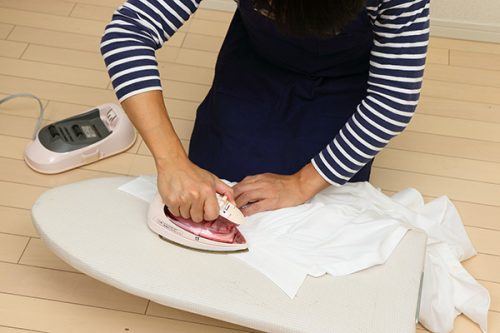
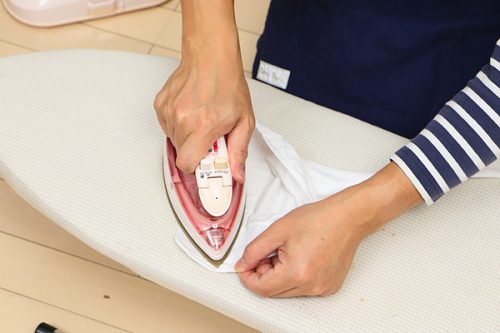
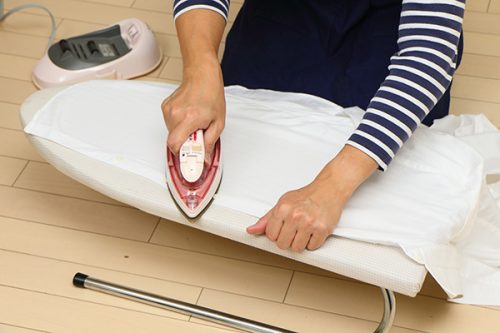
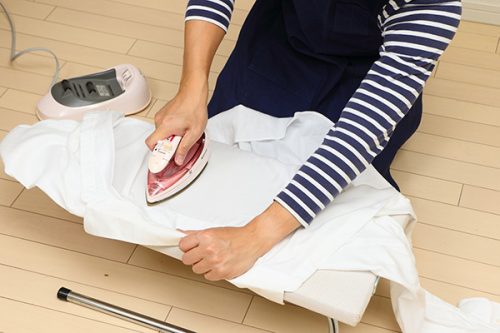
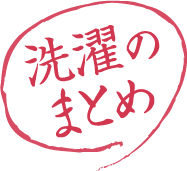
Sharing know-how with the couple!
There is a scientific basis for how to remove stains. In many cases, the correct method is clear for each type of stain. In other words, laundry is a chore that requires knowledge. Couples are encouraged to share their know-how.

